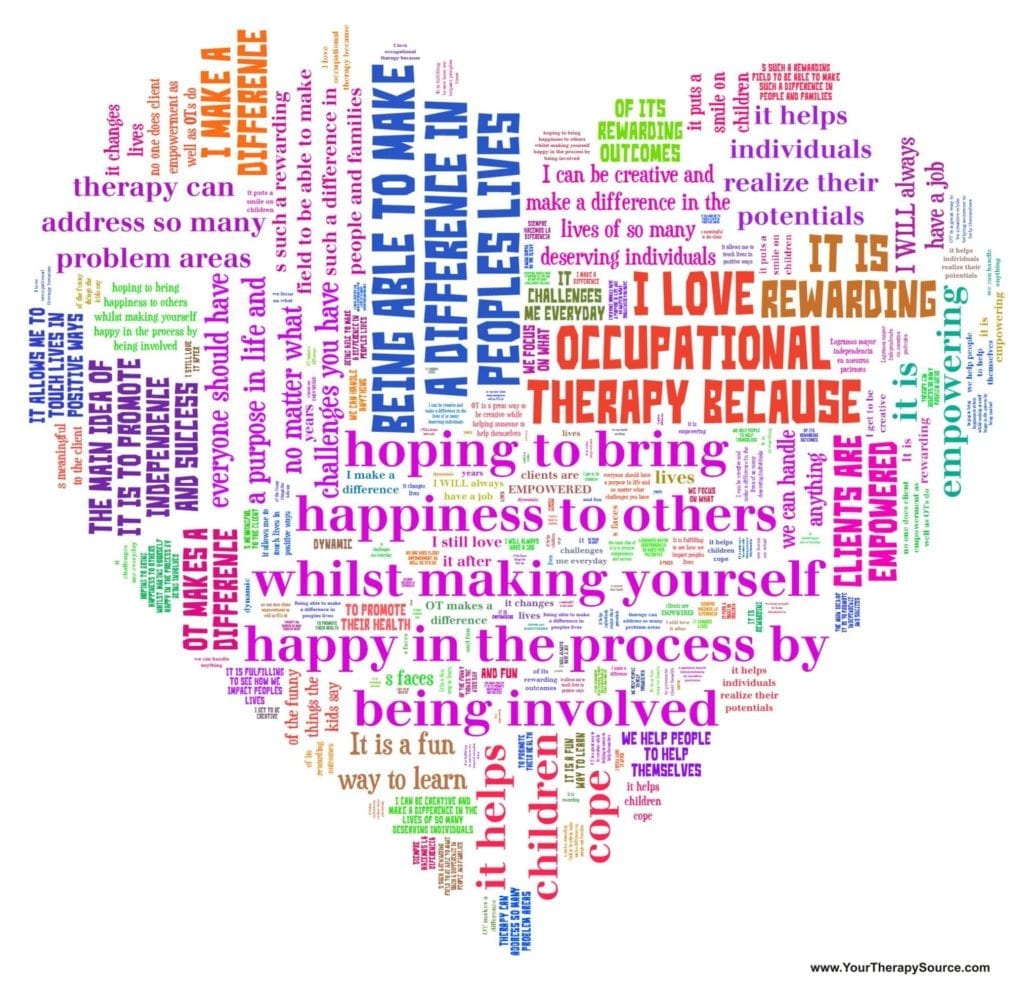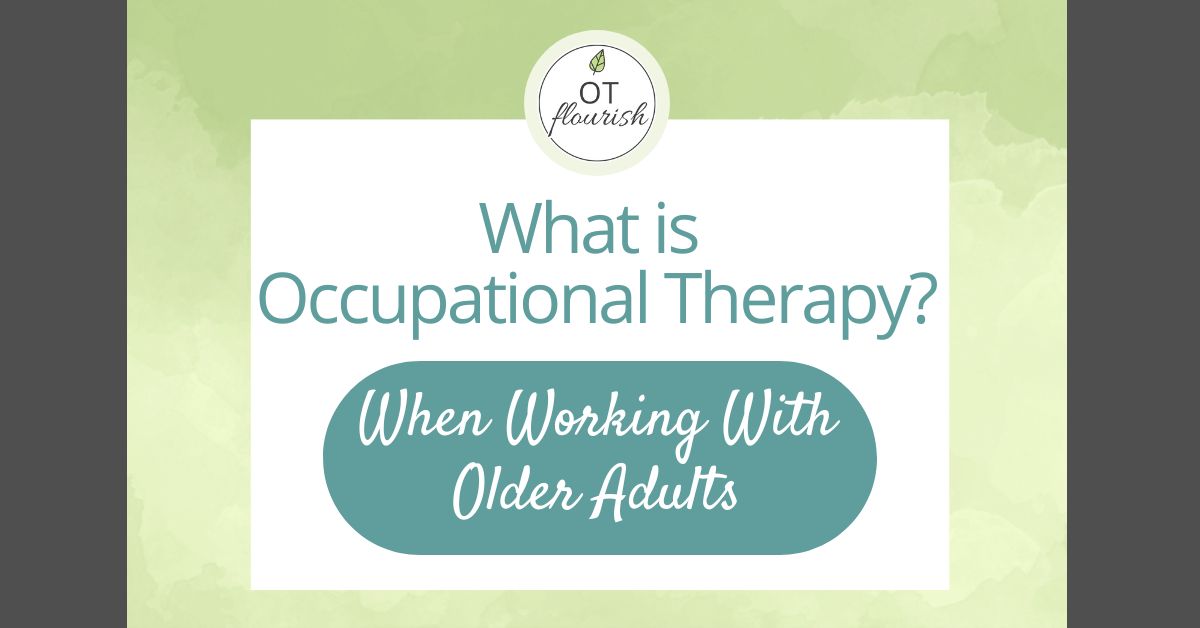What is occupational therapy (OT)? What is it like when working with adults? Or what does this look like if we, as OT practitioners are working with older adults?
This is a question I get over and over and I can assure you it is not finding people a job (even though you can work with vocational rehab), the same as physical therapy (even though we work closely together) or “just” getting people dressed (even though we can definitely work with people to achieve this goal!).
In this article, we are going to explore the who, what, when, why and how of OT when working in settings with older adults.
So…What are the Definitions of Occupational Therapy
In a nutshell, occupational therapy is a health and rehabilitation profession who works with people who have experienced a physical (disability/injury), emotional, developmental or social problem return to being as independent in everyday life as possible through the “occupations” of self-care, work and play/leisure activities. These occupations are everything from getting dressed and getting out of bed, to driving, grocery shopping and even getting back to your golf game! These are the things that we find important (and usually take for granted!) and that we do every day.

The American Occupational Therapy Association‘s Practice Framework (AOTA, 2014b) defines Occupational Therapy as:
“the therapeutic use of everyday life activities (occupations) with individuals or groups for the purpose of enhancing or enabling participation in roles, habits, and routines in home, school, workplace, community, and other settings. OT practitioners use their knowledge of the transactional relationship among the person, his or her engagement in valuable occupations, and the context to design occupation-based intervention plans that facilitate change or growth in client factors (body functions, body structures, values, beliefs, and spirituality) and skills (motor, process, and social interaction) needed for successful participation.
Occupational therapy practitioners are concerned with the end result of participation and thus enable engagement through adaptations and modifications to the environment or objects within the environment when needed. OT services are provided for habilitation, rehabilitation, and promotion of health and wellness for clients with disability- and non–disability related needs. These services include acquisition and preservation of occupational identity for those who have or are are at risk for developing an illness, injury, disease, disorder, condition, impairment, disability, activity limitation, or participation restriction.”
YES! This exactly explains it!
But, wait…What Exactly Does an Occupational Therapist Do?
OTs and certified occupational therapy assistants help adults manage everyday tasks and activities. It can help with physical, mental, and emotional issues that can make it difficult to do everyday activities. OT can help adults with disabilities, chronic illnesses, or injuries gain the skills they need to live a more independent and productive life.
It can also help adults with mental health issues, such as depression, anxiety, and PTSD, by providing coping strategies and techniques to help them manage their symptoms. We can also help adults who are aging by providing strategies to help them stay safe and independent in their homes. With the help of OT, adults can gain the skills and confidence they need to live a more fulfilling life.
What Are Some Examples of Occupational Therapy Working With Adults?
- Someone has had a stroke and wants to be able to get dressed on their own again using only one hand.
- Someone has just returned from war and needs to learn how to use their prosthetic arm to write.
- Someone is an at-risk youth and needs to learn new skills on how to build healthy relationships to stay out of gangs.
- Someone’s child has a developmental disability and is having a hard time eating foods because they can’t handle textures.
- Someone has Parkinson’s disease and they have difficulty with tasks such as sitting to standing because they continually fall backwards.
- Someone has dementia and their family wants to know how to get them to bathe.
- Someone is returning back to construction work after a shoulder injury and needs to gain strength and endurance in order to work a 10 hour day.
- Someone has schizophrenia and needs help learning how to manage their money in order to buy their own groceries.
- Someone has a spinal cord injury and wants to be able to find the best electric wheelchair and learn how to use it to keep them from getting pressure sores.
- Someone wants to return home after a short stay at a nursing home and needs recommendations for home modifications, safety tips and equipment.
What is the Difference Between Physical Therapy and Occupational Therapy?
The difference between OT and PT is that OT focuses on helping people to develop, recover, and maintain the skills needed for daily living (occupations), while physical therapy focuses on improving a person’s physical mobility and strength.
OT may include activities such as helping someone learn how to dress themselves, cook, manage their finances, and use adaptive equipment. PT focuses on helping people improve their range of motion, build strength, and improve balance. Both OT and PT can help people improve their quality of life, but the approach and techniques used are different.
I love being an OT for so many reasons, but one of the main reasons is that I truly believe that
Occupational therapy directly helps people achieve the goals that they want and need for a successful life.
And that’s a beautiful thing…





